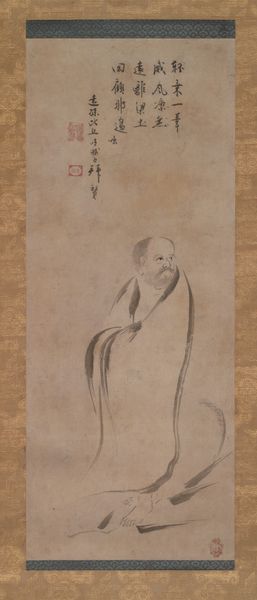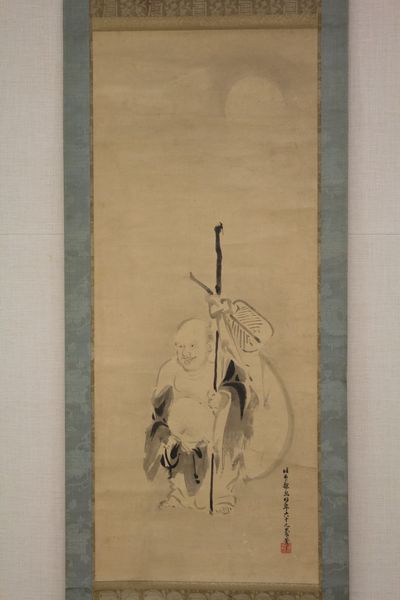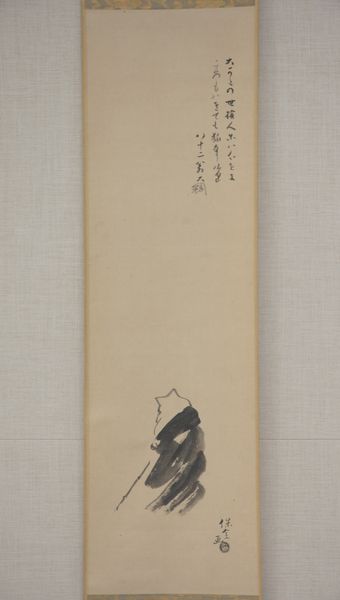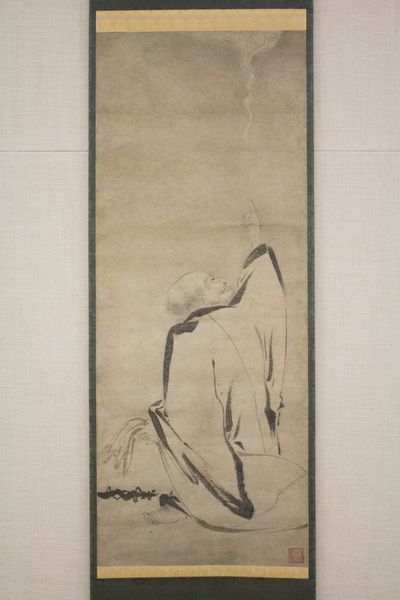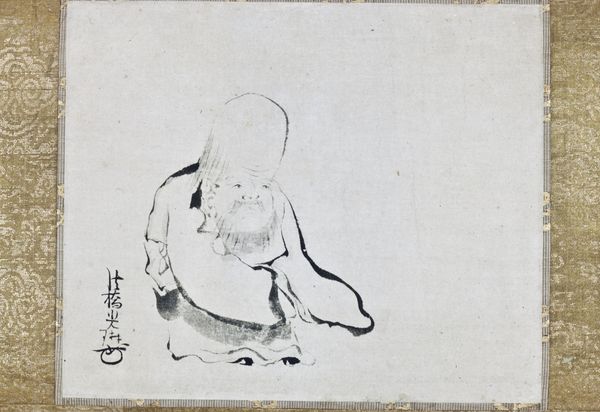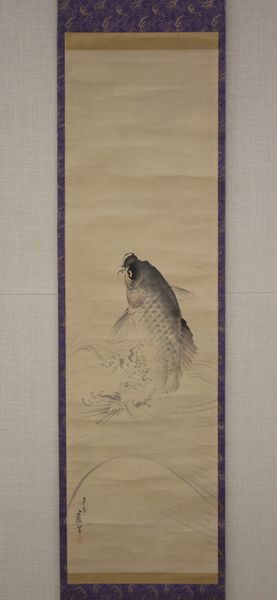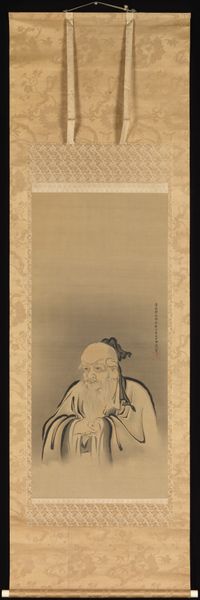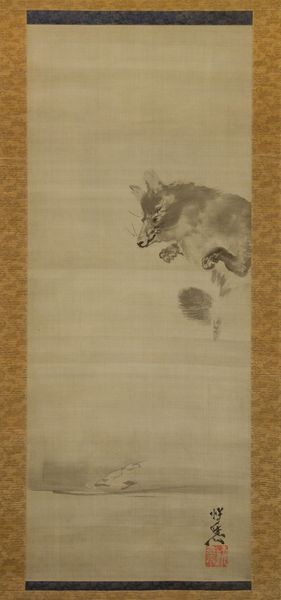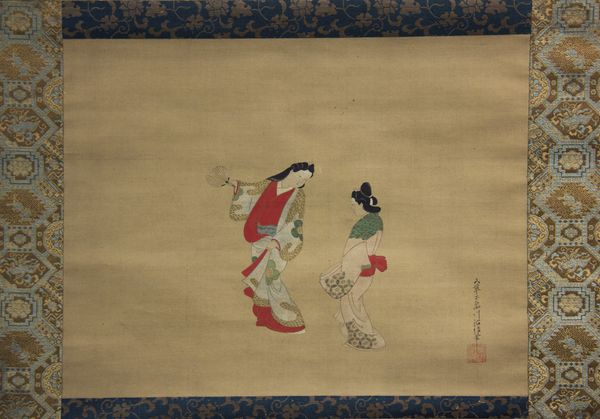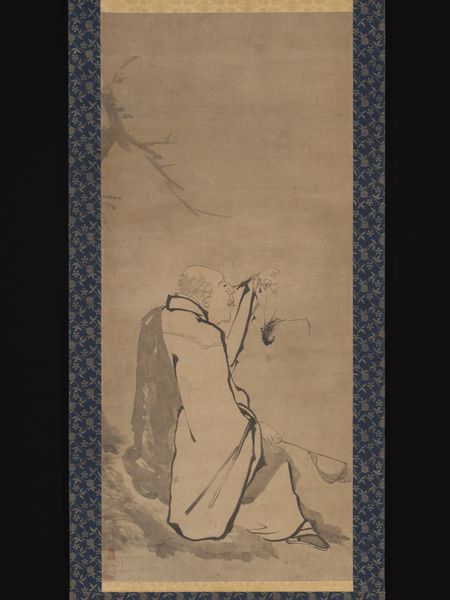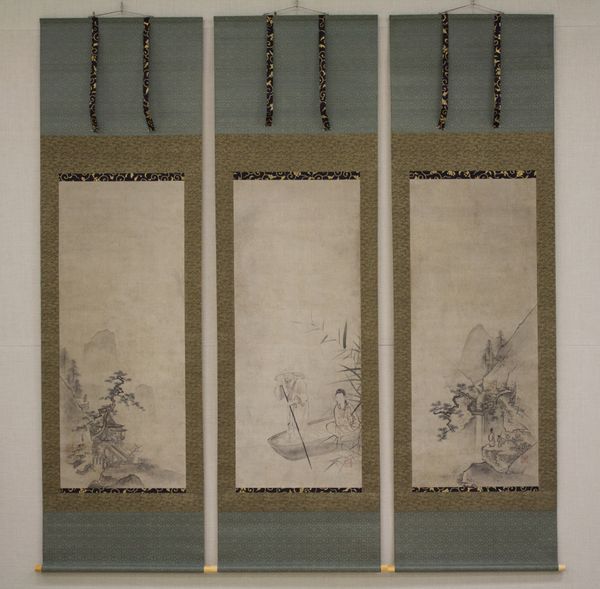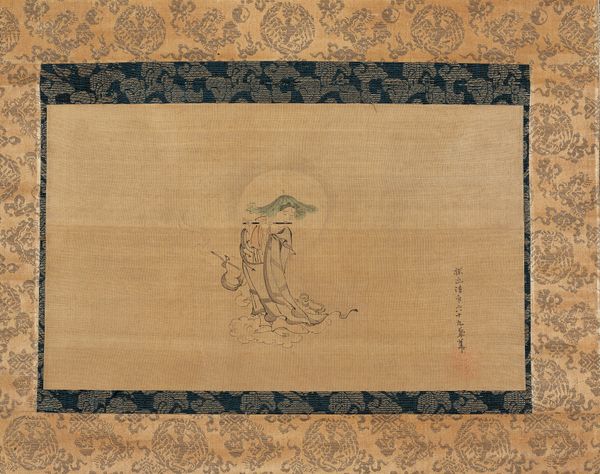
drawing, ink
#
portrait
#
drawing
#
asian-art
#
figuration
#
ink
Dimensions: Image: 35 1/8 × 11 5/16 in. (89.2 × 28.8 cm) Overall with mounting: 68 1/8 × 15 1/4 in. (173 × 38.7 cm) Overall with knobs: 68 1/8 × 16 3/4 in. (173 × 42.5 cm)
Copyright: Public Domain
Curator: There's a certain peaceful quality to this piece, wouldn't you say? The scroll painting we're looking at is titled "Painting of Jurōjin." It was created sometime between 1667 and 1713 by Kano Tsunenobu. Editor: Yes, there is. It feels very meditative. And it's monochrome, isn't it? Just the stark black ink on the pale paper—very elemental, minimal. How does it function culturally? Curator: Jurōjin is one of the Seven Gods of Fortune in Japanese folklore. He represents longevity. His elongated head is itself a symbol of wisdom and age, as is his long white beard. It's interesting how easily recognizable these attributes become over time, forming an instantly understood visual shorthand. Editor: Absolutely. And how often these symbols reflect societal values about aging and status. The scroll format itself adds another layer, functioning almost as a window into a quiet, internal space. Are we meant to consider this a representation of actual old age, or some sort of aspirational figure? Curator: Probably both, I think. He carries a staff and often has a deer or crane as a companion, all symbols reinforcing long life. He embodies the idea of aging gracefully and accumulating wisdom, which are both highly valued concepts. Editor: I see that the work is on view at The Metropolitan Museum of Art here in New York. I wonder, in removing this depiction of aging from its cultural context in Japan, how might it challenge or even reinforce Western anxieties about mortality? Curator: That's a valid question. Western culture often focuses on anti-aging, and here is an artwork celebrating longevity. The brushstrokes, rendered in ink, convey his agedness as something profound and dignified, contrasting starkly with certain contemporary views. Editor: It offers a quiet resistance, perhaps? Jurōjin’s composure, achieved through Tsunenobu’s expressive line work, contrasts sharply with our youth-obsessed culture. Viewing it from afar as we are, we become both spectators of, and participants in, the ongoing negotiation of cultural values around aging. Curator: I appreciate how it reminds us that symbols evolve. They don’t exist in a vacuum, and they often say as much about the societies viewing them as the ones that originated them. Editor: Indeed, reflecting on this work’s impact encourages us to look beyond surface representations and question the values and beliefs ingrained in cultural symbols across time and space.
Comments
No comments
Be the first to comment and join the conversation on the ultimate creative platform.
